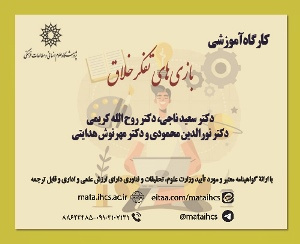اشعریان و تحول گفتمان تاریخ نگاری محدثان قمی در موضوع امام شناسی (مقاله پژوهشی حوزه)
درجه علمی: علمی-پژوهشی (حوزوی)
آرشیو
چکیده
دانش تاریخ بر پایه سنّت تجربه گرایانه خود در سده های اخیر، توان بازنمایی ابعاد فراطبیعی امامان شیعی را ندارد. با توجه به در دسترس نبودن بخش عمده ای از منابع تاریخی در محدوده زمانی قرن های دو تا پنج هجری، و اهمیت آثار محدثان شیعی، به ویژه قمی ها در بازنمایی تاریخ امامان در منابع روایی، این پرسش رخ می نماید که محدثان قمی چه مسیری را برای بازنمایی ابعاد مختلف شخصیت امامان شیعی(ع) طی کرده اند؟ تحقیق حاضر، با نگاهی به روش تحلیل گفتمان و ترسیم گفتمان های تاریخی و کلامی و تبیین ارکان آنها در روایات امام شناسی محدثان قمی در سده های نخستین اسلامی، به تبیین روند فزاینده استفاده از داده های کلامی در قالب گزاره های تاریخی برای شناساندن امامان و عوامل گسترش آن پرداخته است. یافته های پژوهش، نشان می دهد که عوامل اجتماعی، سیاسی و اقتصادی و دلایلی چون آمادگی ذهنی مخاطبان، بر غلبه گفتمان کلامی در تاریخ نگاری محدثان قمی تأثیرگذار بوده است.Ash'aris and the Development of the Historiographical Discourse of Qomi Scholars concerning Imamology
The knowledge of history, based on its empiricist tradition in recent centuries, is unable to represent the supernatural dimensions of Shiite imams. Considering the unavailability of a major part of historical sources in the time range of the second to fifth centuries of Hijri, and the importance of the works of Shia muhaddiths, especially Qomi in representing the history of Imams in narrative sources, the question arises as to what path the Qomi muhaddiths should take to represent different dimensions of the character of the Shiite imam. The present research, looking at the method of discourse analysis and drawing historical and theological discourses and explaining their elements in the traditions of Imamology of Qomi muhaddiths in the first centuries of Islam, has explained the increasing trend of using theological data in the form of historical propositions to identify imams and the factors of its expansion. The findings of the research show that social, political and economic factors and reasons such as the mental preparation of the audience have influenced the predominance of verbal discourse in the historiography of Qomi scholars.





